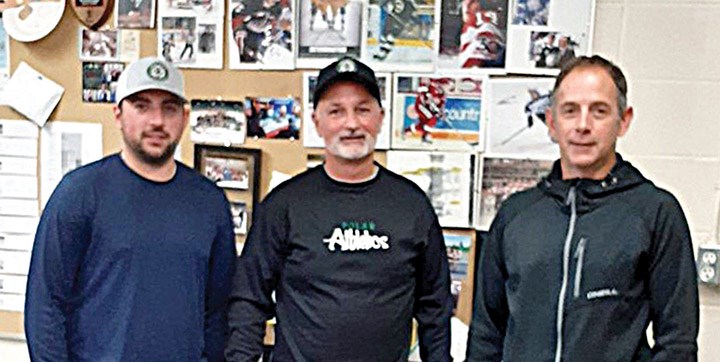Three local educators were part of creating a concussion education module for those working with student athletes within School District 57 and in the community.
Renzo Berra and RJay Berra, teachers and skills instructors who work at Prince George Secondary School and Rob Lewis, vice principal of the Central Interior Distance Education School, curriculum & innovations department, came together to provide working knowledge from their experience to inform a library guide called the Concussion Awareness Project.
SD 57 trustees came to Lewis and the Berras to put together a comprehensive guide for the school district about concussions and the after care required to help a student in recovery, Lewis said.
"The school district asked us to put together a team to build on what other school districts had started that examined best practices and to bring forward a tool around awareness, so we did that and included our teacher librarian Joseph Jeffery to pull it all together," Lewis said.
"This program isn't anecdotal, this is the best practices in Canada provided by industry leaders like Health Canada and Health BC for concussion awareness and we're compiling resources and building on the work of others. That was stage one."
In stage two, Renzo and RJay took the lead, Lewis said, in building classroom resources.
There is a continually updated library guide that offers links to resources, online tools, online courses to be taken by coaches, parents, students and that's also where links are found for lesson plans and other digital resources, Lewis added.
"I think I speak for all of us when I say that we're long-time coaches and aging athletes so we understand more than the average person the role concussions are playing on our student athletes and the long-term affects it has on their lives going forward," Renzo said.
As more information is provided about how complex and far reaching a concussion can be to a person it became clear that a team effort of support needs to be established to help an injured student athlete.
"Everyone needs to take this type of injury seriously," Renzo said. "When the school board and the school district asked us to put together a resource around this we were excited to brush up on best practices to help provide a blueprint for others to follow. And it is for the staff of the school district but we realized it was more far reaching than that. Anyone in the community can access it and it provides excellent information for parents, kids and other coaches in the community as well."
There are best practices and knowledge around concussions but it is a constantly changing field where experts are learning more every day, Lewis said.
"Until very recently it was all about rest and being in the dark and taking it easy and now some of the recovery from a concussion includes moderate activity," Lewis said. "There are some new protocols about the stages of recovery and some of those stages are newly evolving so it was good to have a refresher and focus on those."
Good information provided was the kind of monitored activity an athlete is able to participate in and the length of time recovery can actually take, Lewis said.
RJay, who has experienced concussions himself as a former captain of the Prince George Spruce Kings and has seen others go through it, knows people's ability to process information is affected as well.
"Your attention span, how quickly you tire out no matter what you're doing is changed when you are recovering from a concussion and that includes in a classroom," RJay said. "The recommended time a concussed student should be reading, using a screen or focusing on one thing is all new information so we added a list of things as part of the return-to-school plan, which is different from what people expected to see."
Most people, RJay said, would expect just a guideline for returning to sport but the the guide is more comprehensive.
When a right-handed student breaks their right wrist learning is adapted and the student is offered the use of a computer so they can type instead of trying to write with their injury, RJay gave as an example of accommodating specific needs of a student. The approach to a student recovering from concussion is similar, where their needs are accommodated, too, he added.
"The focus for us as coaches and being immersed in the sports world the concussions we're coming across are often related to sport," Lewis said. "In doing this guide and constructing these resources you really see it's not just a sport or student athlete issue. It's a student issue and people encounter concussions from all sorts of activity, including daily activity and so it's much more than just a sport issue."
Renzo said he's happy to report that injured students and fellow students are speaking up about concussion, advocating for themselves and others to make sure everyone follows protocol when it comes to this kind of injury.
It's important for students to speak up when an injury is not seen by the coach and report the injury or behaviour a student is displaying that might be the result of a concussion, Renzo added.
"Students share that information more readily now, which is a very important step in the diagnosis process," Renzo said.
The guide is available online at https://sd57.libguides.com/concussion.
In the meantime the Concussion Awareness Training Tool (CATT) was developed by the BC Injury Research and Prevention Unit (BCIRPU) at BC Children’s Hospital for provincial educators working with students in sport and that tool can be found at https://cattonline.com.



